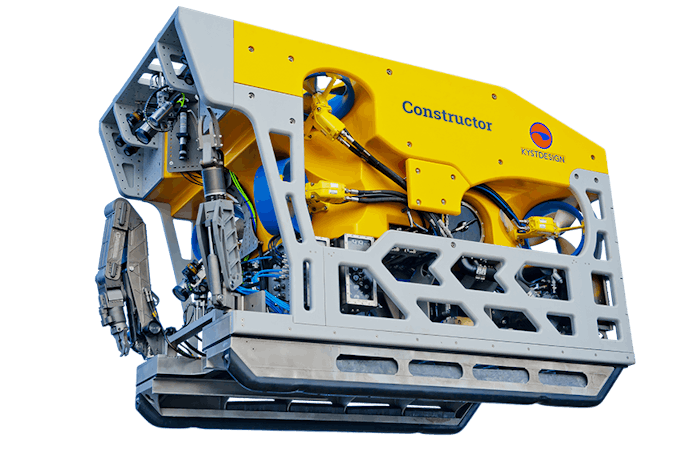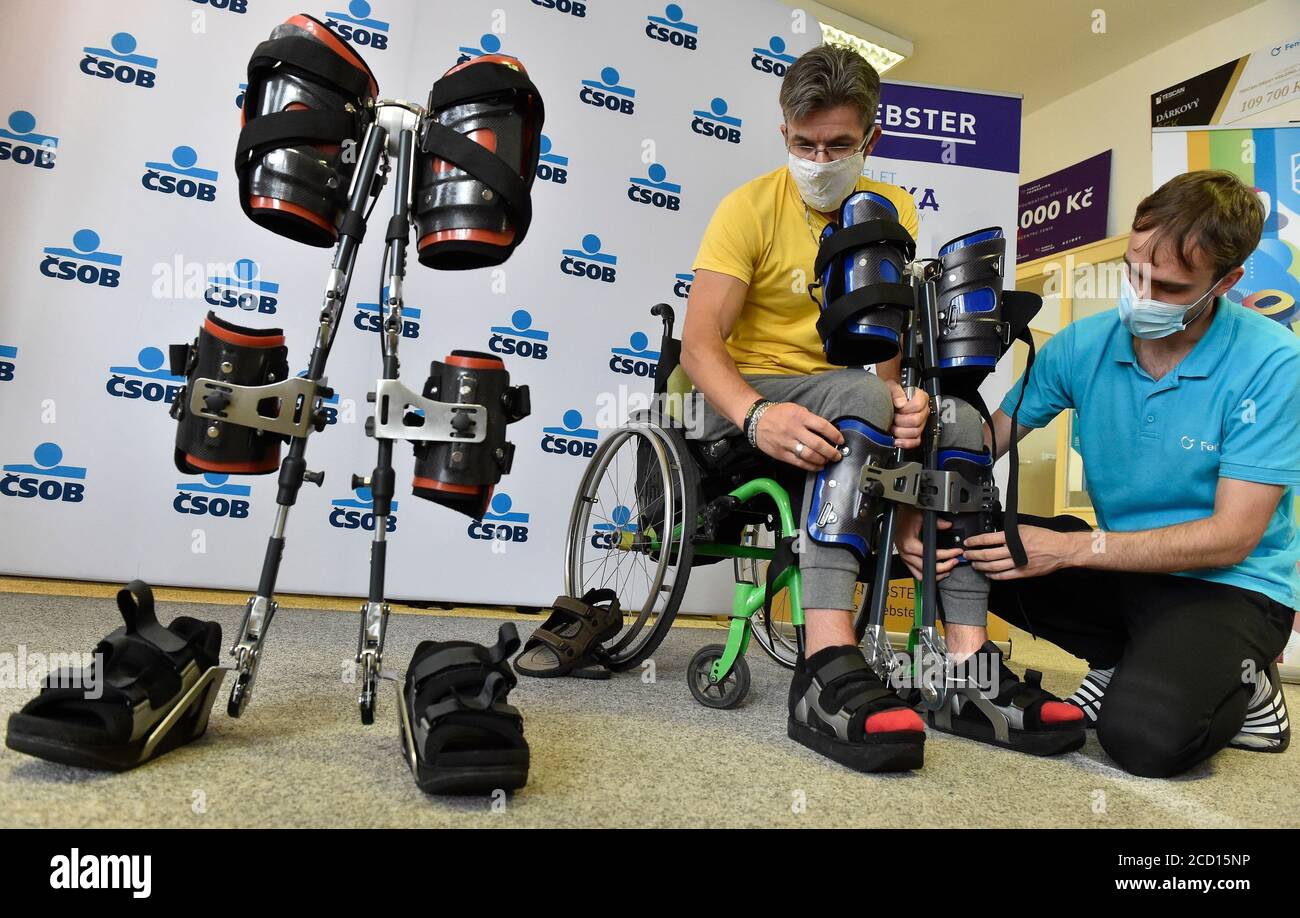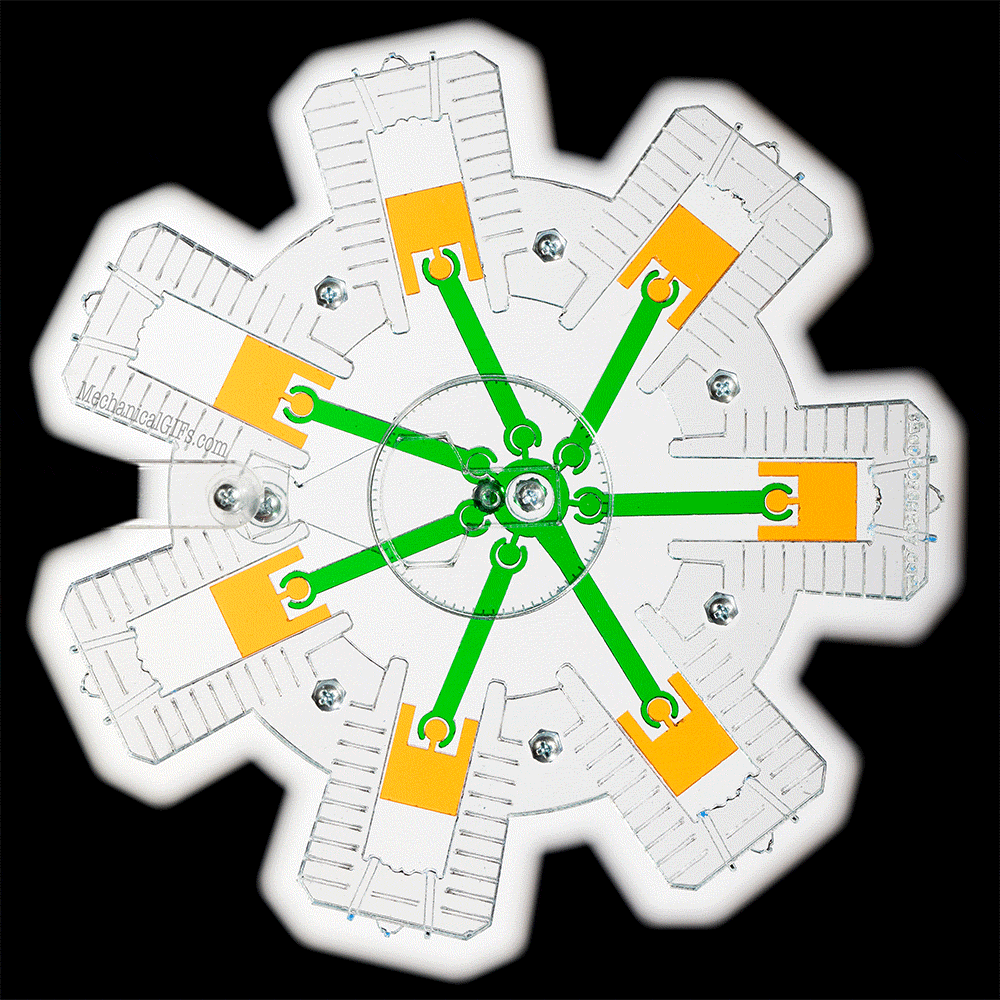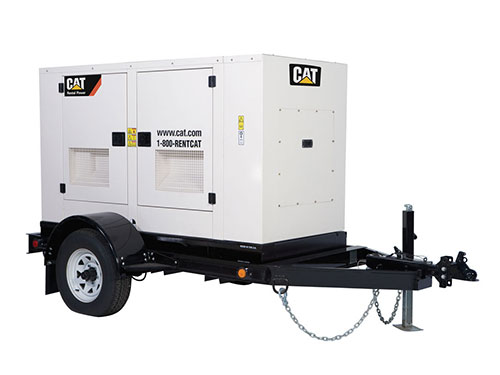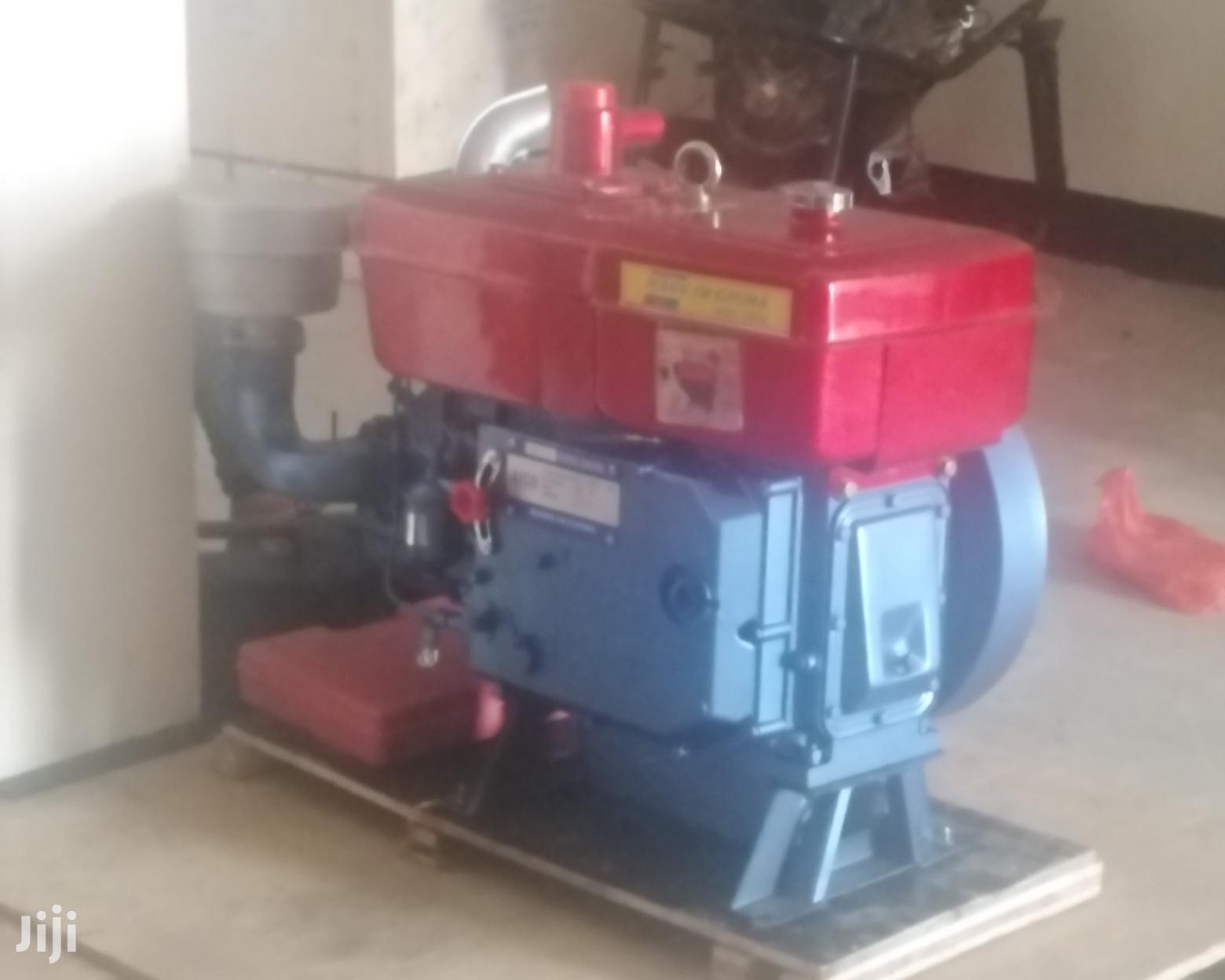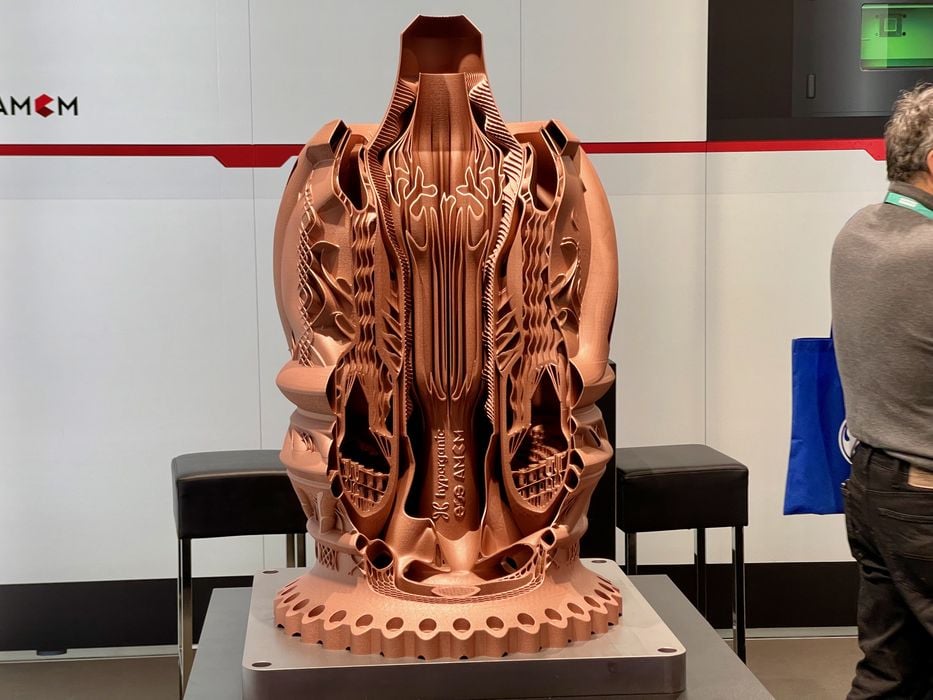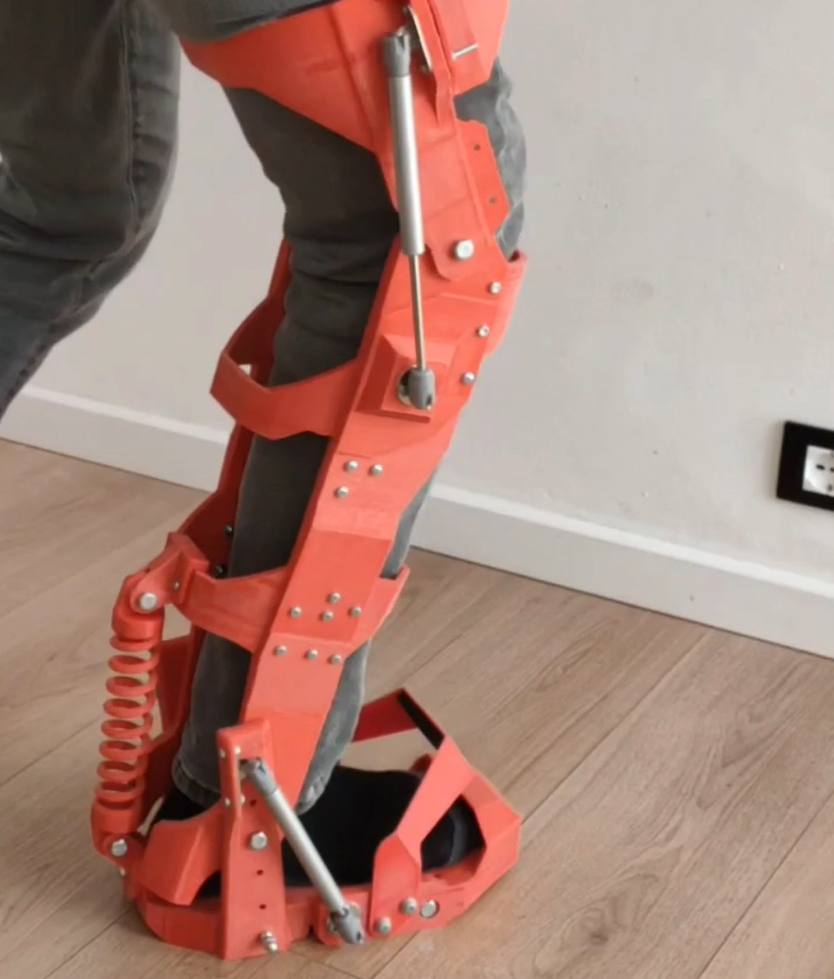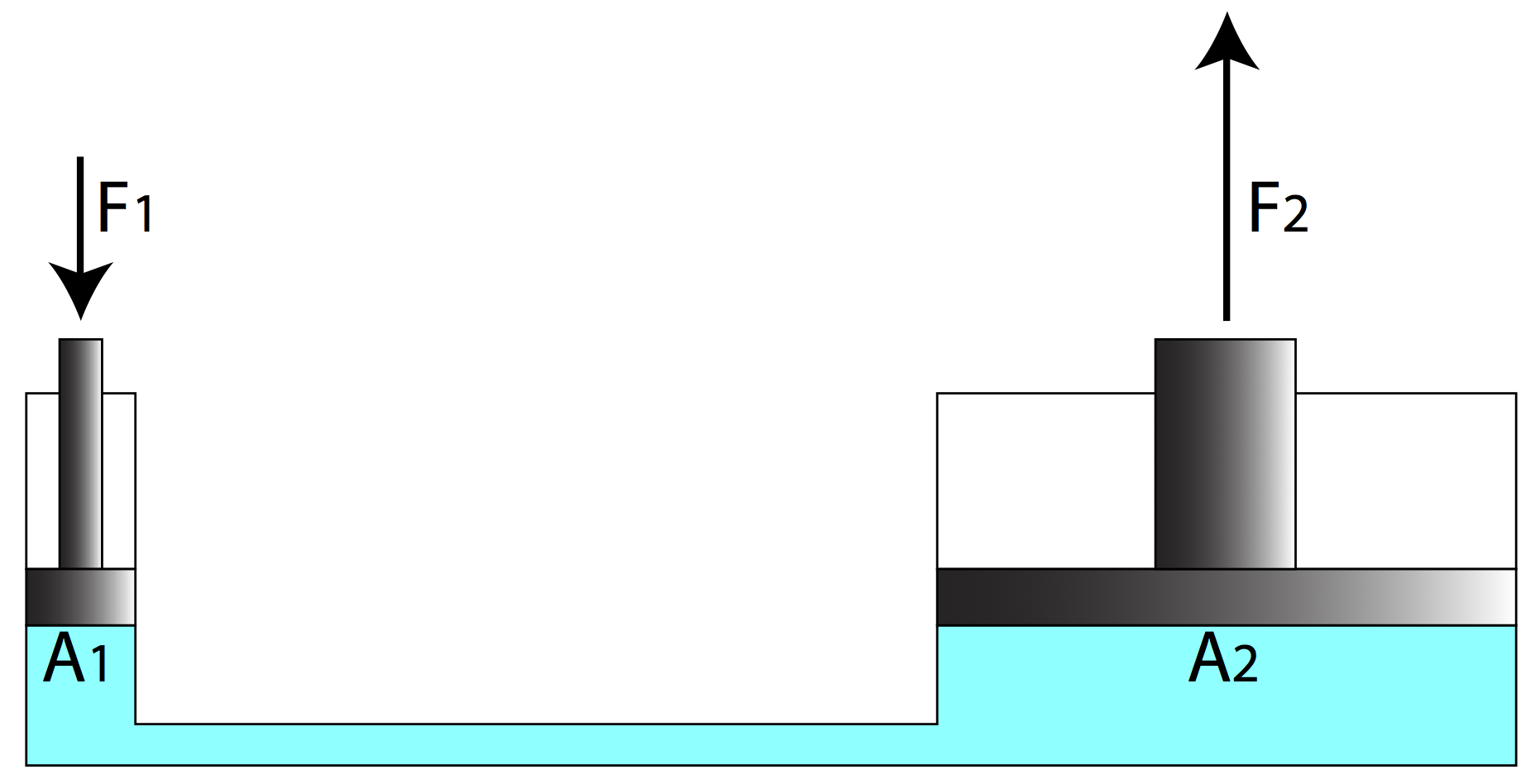-
Project Log 30: Off Topic - real life mechs.
02/27/2023 at 14:23 • 0 commentsMonday, 10:33, 27/02/2023
Good morning y'all, although I decided on what I should do from now on (build a smaller/weaker mech with more reallistic approach), I stopped at the most significant block that can decide if this project will work at all or not:
Money.
I'm broke.
And the junkyards around my town doesn't have any useful mechanic stuff... It is like those junkyards...
Are full of junk.
![]()
Edit²:
Ok, let me clarify something about this junkyard matter:
The junkyards on the city I live are incredibly disputed by business.
Yes, there are entire business, companies, focused only on recycling and extracting scrap.
If you hit your car or something, you can actually sell it for some price for a private junkyard where they will take it apart, re-sell the good pieces and recycle the broken ones.
So, even if you see a broken car on some backvalley, you can't just take it apart, because it most probably has a owner. And some times, the owner is a company.
So, if you want good scrap, you need to buy it, and it doesn't go cheap, because even though it was taken from a broken car, the piece still works and it is as valuable as the working one.
... So... When you go to a junkyard (around here), it doesn't look like this:
![]()
It looks more like this:
Every piece is organized, catalogued and sold for a price.
And like I said, everything functional/useful is quickly sold and/or taken.I mean, it is good for our environment that everything is efficiently used and recycled instead of just discarding tons and tons of trash everywhere.
But yeah, I can't get stuff for free. xD
Maybe if I lived around a really distant town I could find more scrap, but maybe not useful scrap... 🤔
Anyway, today I decided to make an off-topic project log just showing better options for a mech: options that are used in the real world on actual real applications.
Sorry Method 2, you're just a toy. :/
![]()
"How would mechs in real life look like?"
The answer to this question on quora is actually really good.
Like this:
There actually were a lot of attempts on making an "1 crew tank" throughout the history of war and the military.
And there are a few to this day being used, mostly on niche applications by the SWAT, I believe.
Kinda goofy looking, but hey, it works (I think).
And an actual "mech" with threads was made by the US for use in nuclear operations or bomb disposal in general.
![]()
The base rotates and extends hydraulically with a group of telescopic cylinder, by the way.
It had its own life support systems, with cameras to the outside and all that cool stuff.
And normally, underwater repairs and this kind of stuff in general is made by "mech" submarines.
I also found this other one, and it seems like it is a remote controlled (or from the inside) unit for underwater construction work.
![]()
This is called "KYSTDESIGN ROV", I believe.
There are also bomb disposal remote controlled robots, but I don't think that these could be considered as mechs.
![]()
Conclusion:And while I was looking around forums discussing things about mechs in real life, normally people come to the same conclusions:
- Mechs are not practical.
- Mechs would only be practical on places where gravity doesn't matter, like underwater or in space.
- Mechs would only be practical for logistics with undertrained personnel, literally "just carry this box" or "dig a hole there".
Alghough it is debatable if in the previous 2 options those mechs would even need legs. - Mechs could be practical for highly harzadours environment where other types of remotely controlled robtos aren't capable of being used, like the previous examples, such as radioactive, toxic and explosive places.
With all that in mind, I present to you, the perfect mech that anyone can build and it could be useful in real life:
BEHOLD
The ball.
![]()
(Just ignore the guns, I couldn't find a picture without those)
Exactly, a custom build for Gundam figures.
An anime which already discussed all those subjects in 1979. :|
![]()
Edit³:It is almost a sin to talk about tracked mech/tank mech and not mention the power loader the HackSmith channel made.
Although this ball thing is supposed to be the size of a building, one could make a smaller version with arms.(this is an airsoft/paintball tank by the way)
And yes, believe or not, tracked vehicles can in fact climb stairs and ramps with 60º degrees of slope or even more.
I heard the rubber pads on a Abrams tank can keep the tank standing still on even 80º slopes (probably I'm remembering it incorrectly).
One could control the tracks with independent pedals on the foot and potentiometer gloves to control the arms.
More like the Lucidgloves rather than the example after that (and I was thinking on hydraulic arms by the way).
Anyway, I hope y'all liked this Project Log.
I will definitely take a loooong while to build this new mech suit. :/
First, I need to either find a better job, or keep looking in the junkyards.
Hope I come to post more development Project Logs soon.
- Mechs are not practical.
-
Project Log 29: Let's go easy this time.
02/26/2023 at 11:28 • 0 commentsSunday, 08:24, 26/02/2023
Edit⁵:Well, guess who made mistakes AGAIN?!
So, I made this project log with the idea that 10mm McKibben muscle can output 200 lbs of force because of the Hackaday video.
The thing is that I missremembered it, and in fact, the McKibben muscle that can actually output 200 lbs of force is the 1 inch braided sleeve muscle.
1 inch = 2.5 centimeters.
2.5 centimeters = 25 milimeters.
4:47 is the time mark of the moment I mistaken for something else.
So, this mean I will have to remake the entire calculation because I'm stupid. :|
25mm in diameter, 30cm in length, 0.147-150 liters inside when unactuated, 0.290 liters actuated, 0.140 liters of difference.Like I said in previous edits in this same Project Log (actually, I didn't), I would need in 564 muscles in total for the first configuration of simply multiplying all lower limb muscles quantities by 3.
84.6 liters in total, 253.8 liters per second if it was a third of a second, 15,228 liters per minute.
![]()
If I actuated only the bottom half, I would need 9720 liters per minute in total, 4860 LPM.
Needing 61 hydraulic pumps, needing 48.6 hp of power.The top half would need 2754 LPM, 35 pumps, 27 hp of power.
If the 6 bundles of muscles on the thighs and feet where enough, then...+6 on the hips/thighs, +6 on the feet/ankle of bundle of muscles with 3 muscles each. 36 muscles in total.
+3 groups on the top part of the knee, +3 groups on the opposite side of the knee. 18 muscles in total.Now, the top of the body, +6 for the torso, +6 for a neck, +6 for the shoulder, +1 for moving the arms up, +1 to move the arms down, +1 for the biceps, +1 for the triceps, +6 for the wrist, +3 per finger.
31 muscles for each arm alone, +6 (the neck doesn't need to be that strong, so I won't count it), 68 bundle of muscles in total.
So, since each muscle bundle has 3 McKibben muscles, then it is 204 muscles in total, 5520 liters per minute, 2760 liters per minute if only half was actuated.
If I used only 80 LPM hydraulic pumps, I would need around 35 of those, and since each pump needs 0.8 hp to run at 8 bars, I would need 27 hp.
Assuming it is still 10mm braided sleeves, but at twice the pressure, so they supposedly output twice the amount of force, so I don't need the same amount of fluid flow, I would need around 44 hp of power in total for 28 pumps.
Well, since my last post, I will now have to calculate a more... Reallistic and easier approach for the actuators.And at least this time it maybe won't be as labor intensive as making a 30cm per 15cm McKibben muscles out of multifilament steel cables as I was planning on doing, lol.
I will now calculate how many of those I would need, the power requirement and the cost.
- Conventional McKibben muscles
- Multifilament McKibben muscles
- Homemade hydraulic cylinders made of PVC or Metal.
Edit²:
I think that this edit is important enough to be mentioned.
I don't actually need 1.25 hp per pump to achieve 4 bars of pressure, I miss calcualted it.
I actually just need 0.4 horse power to achieve 4 bars. :|
And yes, I did remade some calculations, 0.4 hp is around 3 times less horsepower than 1.25.
So even though I misscalculated, needing 40 hydraulic pumps or more is still an insane amount of pumps to feed.
By the way, something that I forgot to talk about, since I will make a 300 kg power mechsuit that will only be able to lift 100 kg, this means this suit will be as strong as the Guardian XO.
Except it won't cost 100,000 euros. :|
Now that I think about it... 100-300kg is more or less on the capacity of a well trained human being.
I guess that of all things, that phrase of captain america movie kinda makes sense for exoskeletons: "it doesn't give you anything, it simply augments what is already in there" (I think that's what the doctor said or whatever).
It is an "augmentation suit", yes, I will build it with its own skeleton for self support, but it would be an outstanding piece of equipment if I were already buffy enough.
But will I train to be strong enough to be an outstanding piece of equipment? Hell no. xD
Also, I think in this case Passive and Quasi-passive exoskeletons/exosuits could be a fine adition in order to take alway the maximum weight as possible from the wearer.
![]()
There are a lot of those passive and quasi-passive exoskeletons, after all, these are really cheap and simple to make.
I remember reading about one some years ago saying that "exoskeletons and exosuits differ where exoskeletons are rigid suits and exosuits are soft suits", the above image is an exosuit.
The rigid ones are more like orthopedic auxiliary devices, and to be honest, that is a good enough reason to research exoskeletons on its own.
![]()
I remember seeing once an article about a quasi-passive exoskeleton where there was a rubber air pump (like those used for measure blood pressure bags) on the user's foot, and every time they stepped on the ground, the air/liquid pump would fill up low pressure McKibben muscles.
I think it is this one, if I'm not mistaken.
... No, by the sound of it, it is a pneumatic activated muscles.
The one I saw was a muscle used on the thighs not on the ankle/feet... hum...I remember downloading an article about it once, but it is buried between the 30+ gigas of scientific articles I have on my pen drives, lol.
1- Calculating McKibben muscles.Starting with conventional hydraulic McKibben muscles with stainless steel or aramid braided sleeve, which is actually hard as heck to find on the internet.
In fact, I think it is impossible, because I couldn't find a single website selling those things, only copper painted in silver.
Ok, 2 hours later I finally found those, and normally these are more or less 60 reais (11 dollars) per meter or in packs around 300 reais (50 dollars) with 10 meters or so.
Goddammit, that's why I wanted to make then by hand using steel cables. Just now I remembered why. >:(
And normally, these are for 20mm braided sleeves, while nylon sleeves, I can easily find up to 50mm of diameter.
The ones used by HackSmith were 3/8 inch, which is more or less 10mm (1cm) of diameter.
Which is interesting, because I'm aiming for 2-5 times bigger than that. 🤔
Dunno if I can say that the strength will also be 2-5 times higher than those they used...
So, let's go with 10mm and then 20mm and 50mm.
But beforehand: let me say that this is if all muscles were actuated at once, it wouldn't happen.But it just gives an idea.
I will cut in half or at least in a third more or less what one would need.
Also, combustion engines don't actually stay at its ranged horsepower (like 400-500) all the time, only in certain moments, like climbing a hole, a ramp etc.
So the average hp would be way bellow that.
For 10mm McKibben muscles:
- 10mm in diameter
30cm in length
0.024 liters (24 ml)
and weight 0.02 kg (20 grams)
- 72 bundle of muscles each containing 3 unactuated mckibben muscles will have in total:
5.1 liters of volume
4.32 kg.
- Contraction reduces length in 20% and increases diameter in 40%.
14mm in diameter
24cm in length
0.046 liters
and weight 0.05 kg - 72 bundle of muscles each 3 actuated McKibben Muscles will have in total:
9.9 liters
10.8 kg
- The difference is what I will have to pump in a second or less:
4.752 liters
6.48 kg - 4,752 liters per second
285,12 liters per minute - I would need around 4-5 hydraulic pumps running at 1750 rpm, 1.25 hp each.
I would need around 5-7 hp engines.
- 14,256 liters per second if pumping in a third of a second.
855,36 liters per minute. - I would need 17 hydraulic pumps running at 1750 rpm and 1.25 hp each (4 bars of pressure).
I would need a 21.25 horsepower engine.
*Like I said in the beginning, it is actually 0.4hp, so I would still need around 6.8 hp.
And since there are pumps with 130 liters per minute, I would actually need 7 pumps each running at 0.4hp, which would require 2.63 hp in total.- Always good to remember that this is just the value necessary inside the muscles, the fluid inside the hoses, fluid tank and so on would increase the liters per second significanly.
- Also, 10mm nylon braided sleeve costs around 6 reais (1 dollar) per meter.
And since I would need 64,8 meters in total, this would need to pay 388.8 reais (around 75 dollars).
If it was Aramid/steel braided sleeve, it would cost 1944 reais (370 dollars).
Well, even though I would make a homemade pump, I doubt the amount of horsepower, torque and rpm would change much, simply because of the thickness of the fluid.
Also, remember that I'm thinking on usind LDPE as the inner bladder since it is cheaper, doesn't resist to expansion as much as latex/silicon/rubber bladders and it is really thin, so I can calculate its dimensions more easily.
For 20mm McKibben muscles:
- 20mm of diameter
30cm in length
0.094 liters
0.09 kg
- 72 bundles of muscles each containing 3 unactuated McKibben muscles will have in total:
20.3 liters
19.44 kg
- Contraction reduces length in 20% and increases diameter in 40%.
28mm in diameter
24cm in length
0.148 liters
0.15 kg - 72 bundle of muscles each 3 actuated McKibben Muscles will have in total:
31.9 liters
32.4 kg
- The difference is what I will have to pump in a second or less:
11.6 liters
12.96 kg - 11.6 liters per second
696 liters per minute. - I would need around 13-14 hydraulic pumps, each running at 1.25hp (4 bars of pressure).
I would need a 17hp combustion engine to run this.
- 34,8 liters per second if pumping in a third of a second.
2088 liters per minute.
- I would need 40 hydraulic pumps, each running at 1.25 hp (4 bars).
I would need a 50 hp engine to run this. - Even if I assumed that 20mm would be able to output twice the force of a 10mm McKibben muscle, I would need around 1044 liters per minute and 25hp engine.
*Actually 0.4, and I would need, in the second case, a 3.2hp engine and 8 hydraulic pumps (each costs 1300 brazilian bucks, so I don't think I will be trying this out, lol).
- Also, 20mm nylon braided sleeve costs around 7 reais (~2 dollars) per meter.
And since I would need 64,8 meters (or 43,2 meter if only 2 per bundle), it would cost more or less the same as the 10mm one.
Around 400 reais (around 75 dollars)
Around 2000 reais (383 dollars) for aramid/steel. - Now if it was 43,2 meters, it would cost 300 reais (70 dollars) for Nylon.
1300 reais (250 dollars) for Aramid/Steel.
For 50mm McKibben muscles:Well, for this one I will only calculate for Nylon and for a single muscle per bundle, because this will definitely output more force than the 10mm one and because I can't find other braided sleeves in this size with aramid/steel. :/
- 50mm of diameter
30cm of length
0.589 liters
0.59 kg
- 72 unactuated muscles will have:
42.4 liters
42.48 kg
- Contraction reduces length in 20% and increases diameter in 40%.
70 mm of diameter.
24cm of length.
0.924 liters
0.92 kg - 72 actuated muscles would have in total:
66.5 liters
66.24 kg
- The difference is what I will have to pump in a a second or less:
24.1 liters
23.76 kg - 24.1 liters per second
1446 liters per minute. - I would need around 27 hydraulic pumps, in which each would need 1.25 hp (4 bars of pressure).
I would need a 35hp engine.
- liters per second if pumping in a third of a second.
4338 liters per minute. - I would need 83 hydraulic pumps each running at 1.25 hp.
A 104 hp engine would be required to run this thing.
*actually 33 hydraulic pumps and 13hp engine
- 50mm nylon braided sleeve costs around 20 reais (around 5 dollars) per meter, and since in this case we would need around 21 meters, it would cost around 420 reais (80 dollars).
- But since this would require an insane amount of hydraulic fluid, better not.
Now calculating a "realistically" amount of fluid flow:I say "reallistic" because I don't really know how many muscles will actuate at "full throttle" of the suit.
- For the 10mm McKibben muscles:
36 muscles actuated in a third of a second, adding 0.022 liters per muscle, which would need 2.3 liters per second if actuated in a third of a second.
Which would be 142,56 liters per minute in total.
Around 3 hydraulic pumps each running at 1.25hp, I would need 3.75hp in total, which is 2812.5 watts per hour.
One would think that using those 3000 watts car batteries could be viable now, but each 3000 watt battery weights 50 kg, with 4 of those, the suit would weight extra 200kg, and it would only give around... 4.5 hours of run time.
If it was one third of the muscles, it would be around 24 muscles... Which would be 95,04 liters per minute, which would need 2 hydraulic pumps, which would be 2.5hp, which would consume 1800 watts per hour.
Around 6 horus of run time.
Edit¹:
While researching prices and other equipment pieces, I found out that there are hydraulic pumps on the market that can achieve around 130 liters per minute.
So... Basically, 60 liters per minute for every 1000 rpm, and since the rated rpm is 2500, I can assume it can deliver 130 liters per minute.And since this is at merely 1.25hp of force, then, this pump would consume around 900 watts per hour, with the use of four 3000 watts car batteries, this would last around 13 hours.
Which is a nice thing, since I wouldn't need such crazy amounts of fluid.
And maybe I could force the pump a little more, since it won't be running at 200 bars or anything like that (not that I would advise you to do that).
However, the pump costs something around 1300 reais (250 dollars).
And by the way, this is 900 watts working "at full throttle", you definitly wouldn't need that much if you're just walking or carrying weight in a slow/medium speed rate, which could extend the battery's life.
And another problem that I forgot to mention in this project log is: McKibben muscles tend to under-contract under loads.
Meaning that even though the McKibben can lift 300 kgs, it won't lift the 20% distance of its length.
Which is kinda of a bummer, but also something to consider.
I also always keep out of the conversation that I will add magnetite powder so the progressive electromagnetic valves can work.
The problem is that this will significantly change the viscosity of the hydraulic fluid, and thus it will require more power to be pumped.
Meaning that maybe 1.25 hp won't be enough.
- For the 20mm McKibben muscles:
36 muscles actuated in a third of a second, adding 0.054 liters per muscle, needing 1.9 liters in a third of a second, 349,92 liters per minute in total.
Around 6-7 hydraulic pumps each running at 1.25 hp, needing 9hp.
If it was one third of the muscles, 24 muscles, 233,28 liters per minute, around 4-5 hydraulic pumps, which would need 5 hp.
- For the 50mm McKibben muscles:
36 muscles, 1/3 of a second, adding 0.335 liters, 36.18 liters per second in total, 2170,8 liters per minute in total.
Around 41 pumps, around 5hp engine to power up this crap.
Needless to say, the 10mm McKibben muscle winned this thing. >.>
Edit³:
Also, I totally forgot about something:
The lower body has to be at least 3 times stronger than the arms. :|
So, even though your arms can lift 100 kg and your legs can lift 100, you won't be able to move.
So I need to multiply the number of muscles on the legs by 3.
![]()
So, 6 bundles of muscles in the thigh, 2 in the knee, another 2 in the opposite knee and more 6 on the feet...
Which would give a total of... 96 muscles.
And I have to actuate all of those... Or else the mech/suit wouldn't move.
So... Just for the legs, if the actuated only once in during 1 second while walking (a really slow walking), 2,112 liters per second, 126 liters per minute.
If those actuated at a third of a second, then it would be 6,3 liters per second, which would give 380,16 liters per minute...
I would need 3 hydraulic pumps with 130 liters per minute, which would require 1.2 hp to run.
I thought on using pumps for water that can output more or less twice the 300 lpm value and use for hydraulic oil.
But I don't know how well it would run on oil, since oil can be 30 times more viscous than water, and these pumps are as expensive as the hydraulic ones.
Some are even made out of plastic, dunno if those would generate enough pressure and/or flow... :/
Oh yeah, I totally forgor, it is half of 96 muscles, because only half will be actuate every given time. Or else, the mech wouldn't move.
So... 190.08 liters per minute at 4 bars.
I think I can find an hydraulic pump that achieves this amount of flow.
Well, just now I found out that a human takes 100 steps per minute while walking, which would be 1.6-ish steps per second, and while jogging, 140 steps per minute, which is somethign around 2.3-ish steps per second.
Which means that a third of a second is 3 steps per second, and it is probably running at medium speeds.
Assuming that jogging is "slow" running speed.And jogging is around 6 miles per hour (10 kph), so I will assume that medium running would be around 9-10 miles per hour (14-16 kph).
2- Calculating multi-filament McKibben muscles:
You know the drill, 10 filaments per 1kg of force. We need 300kg, so 3000 filaments each with 1mm of inner diameter, 30cm each (more or less).
So, I would need 900 meters of this thing PER MUSCLE (it is noticiable that I'm done with the subject? lol).I would have 0.707 liters in a single bundle, 50.9 liters in total. :|
Contracted would have 1.3 liters, 99.72 liters in total.
A difference of around 50 liters, 3000 liters per minute.Well, I'm super done with Multi-filament McKIbben muscles.
They are cool, but not for hydraulics.
Screw those. 🙄
Edit⁴:
I believe I misscalculated those, so I tried again, but if these where a single muscle each.
So... If a 30cm long 1mm thick McKibben artificial muscle where to contract, it would have 24cm in length and 1.4mm of diameter, in which only 0.236 mililiters (or 0.0002 liters) would be inside of it.
When contracted, it would have 0.369 ml inside of it (or 0.0003 liters), with a difference of 0.133 ml.
If I multiply this value by 10, which would be the number of filaments to lift 1kg, I would have to provide 1.33 ml (or 0.001 liters), now, multiplied by 300, which is the amount of kg that I need, I would only need 0,399 liters.
Now, multiplying it by 72 bundle of muscles, I would need 28 liters in total.
If those contracted in one second, this would need 1680 liters per minute.
If those contracted in a third of a second, this would need 5171,04 liters per minute.
Not as good as the previous ones, but better than what I calculated beforehand.
And to be honest, I think this one is the best one for pneumatic artificial muscles, but I couldn't find a easier way to understand how much air in liters I would need to fill those.
I can only say that I tried to calculate it using the density, mass and volume equation and I found out that I would need 2grams of air to fill this up... I think.
And to be honest, I don't really know how expensive this thing would be.
Like I said, I could just use cheap nylon and LDPE plastic, but I feel like I'm missing something that will make this extra expensive... humm 🤔
By the way, the pressure used in these muscles is so low that I think I could just use plain water to power them. :|
3- Homemade hydraulic cylinders:First I though on a cylinder with 10cm of diameter and 30cm of travel, meaning I would need 2 liters. Needless to say, at this point if something is above 1 liter per actuator, it is not worth it. :|
Then I tried 5cm of diameter and 20cm of length, it gave 0.393 liters per actuator, but all of them at once would need around 84 liters, 15 liters if it was 36 being actuated... In a second, if it was in a third, then...
Then I thought on 32mm of diameter and 20cm of travel, the cylinder diameter said I would need 37 bars. The site says I would need 9 liters per minute.
The pipe calculator says 0.161 liters per cylinder, 12 liters in total... For 1 second.... 720 liters per minute... At around 4hp.
55hp in total, 13 pumps in total.Also not this.
I also tested inputing values of RC hydraulic cylinders.
![]()
These have around 14mm of diameter and achieve even 30cm of stroke.
The cylinder calculator said these would need 0.012 liters, so 0.884 liters for all 72 actuators, 51 liters per minute for actuation in 1 second.
150 bars of pressure can be achieved by hydraulic pumps at around 14-15hp and 52 liters per minute.
... But, as you know, 155,52 liters per minute to actuate all in a third of a second.If it were 36 actuators, 25,92 liters per minute to actuate all in one second, 77,76 liters per minute to actuate all in a third of a second.
So just 1 pump at 14hp.
Only problem is that every one of these cylinders cost around 150 reais (28 dollars), so... 72 of those... 10,800 reais (2000 dollars).
Yes, I could make those at home... I think... Maybe...
Maybe with carbon fiber and all that stuff...? hum... 🤔
Other options (again):
Now a random thought came to my mind and maybe shape memory alloys like Nitinol could be viable now...?
Nah, too expensive.
And the termo-actuated nylon and/or polyethylene are still not as responsive.
Also, that idea of using hundreds of micro-servo motors in a tendon driven mechsuit may be actually useful now...
Hum...🤔
I've made the calculation by the way, the micro servo would cost around 300,000 reais (57k dollars).
And the Nitinol Shape Memory Alloy (SMA) wire... Well.
In this PDF about SMA Nitinol, it shows that Nitinol wire with merely 0.5mm of diameter can lift 3 kg.
On certain websites, SMA nitinol can even be around 3mm of diameter, which, I would assume, could lift 3 times as more.
But basically, 1 wire can lift 3 kg, I need 100 of those per bundle of muscle, so 30cm average times 100, 30 meters per bundle of muscles, 72 in total, so... 2,1 kilometers of Nitinol.
Which would cost 10,000 dollars, around 50,000 reais.
On some ads on websites like Alibaba, a kg of Nitinol is around 500-700 dollars (while the website I saw before, it costs 1700 dollars per kg), so... Taking into consideration the density, mass and volume of nitinol, 2,1 kilometers of a 0.5mm nitinol wire would weight around 3kg.
Which would cost around 1500 dollars, or 7815,60 Reais.
Of course... Assuming these SMA wires are in a straight line, not twisted or spiralled. You probably could take more force out of the wires... But at higher cost, since the wires would be longer.
And besides its great initial cost... You would actually need a really small amount of power to heat and contract these muscles.
But let me remind you that these wires may or may not be fast enough to contract in less than a second, which is normally how much we move our limbs when doing things...
A third of a second, as I try and try again to obtain this enormous amount of power from the actuators, can be considered too slow for a human's movement. :/
-
Project Log 28: I need to tune it down, no 5 ton mech.
02/24/2023 at 13:08 • 2 commentsIt is Friday my guys, 07:46, 24/02/2023
I will try again to design this insane hydraulic pump that needs to pump out 17-34 thousand liters per minute.
Unless I'm able to disassemble an engine block to measure the dimensions in order to calculate the area necessary for pump this much fluid (or just find a complete kit on the cheap), I think I will give up on the idea for using combustion engine parts to build the pump.
On the other hand, I think I will try to design this pump using hydraulic cylinders and/or just conventional hydraulic pumps.
The problem with conventional hydraulic pumps is that these aren't made to move too much liquid, these are made to pump a small amount of liquid at an insane pressure.
There are centrifugal water pumps, but I don't know how well these would peform with hydraulic oil and how much pressure these would generate.
Again, I took some time looking for hydraulic pump ads on the internet, and all of them are insanely expensive.
I guess I will be forced to work with hydraulic/pneumatic cylinders as pumps.
The problem is:
How the heck do I calculate the torque necessary to rotate those?
![]()
Off-topic:
As you can imagine based on my previous Project Logs, when I say "asking around" I mean asking both on generic question websites (like Quora, WikiAnswers etc), specilized forums/websites (like Stack Exchange) and sci-fi writting advice forums/websites.
And in this sci-fi forum, someone suggested for my "history" making bio-mechs.
![]()
(image from the manga called "Kaiju 8", there were other better examples, but this is the most "E-rated" bio-mech suit I could find)
Basically, taking animal body parts, use electrict stimuli and making a mech. Because these can "self-heal", power themselves up by eating food, are abundant in our meat-based economy/society and so on.
(I don't know what you will think of me after saying this but...) I do agree with what this person said.
It kinda makes sense: we literally eat all parts of a cow on a daily basis, why not use their corpses to make bio-robots?
![]()
But as you can expect, I doubt that a mere rando on the internet would be able to make one of these to work at all.
I mean, assuming the cow is dead and/or you removed its brain for ethics sake, made intrusive surgeries to make it bipedal and add other components to make it "alive" and responding to your commands...
How would one do it?
First you would need to keep the animal corpse's body functions working, and I don't know how to do it.
Assuming you simply pump blood with oxygen with an external artificial lung or simply letting the inner lung working as always, what about the nutrients? The infections? Diseases?
What about the immunologic rejection?
And yes, prothestics that go inside your body (and even transplants) do, in fact, get eventually rejected by your body immunologic system.
![]()
And this was a big plot on "Cyberpunk: Edgerunner", the Cyberpunk 2077 anime adaptation.
Well, if anyone out there have some knowledge on veterinary matters, have a cow laying around and want to "build" a Mech "on the cheap" call me. lol
![]()
The flesh may be weak, but it has its uses...
The pistons:Taking into consideration that most of pneumatic/hydraulic pistons cost around 20-50 reais (4-10 dollars), and I would need at least a dozen of those, I don't think it will be cost effective.
And so, I think I will make DIY/homemade piston cylinders for the hydraulic pump.
Initially I didn't want to make these because:
- Precision is necessary for the mechanism to work.
- It is quite labour intensive.
- The cheapest parts are in plastic, but plastic has too much friction.
- Depending on the material, I would need to use expensive tools (like welding machines).
Well, the idea I had was to use conventional PVC pipes with its insides covered on some low friction material.
... But I couldn't find anything that could easily be applied.
I read on google that Nylon and PTFE (Teflon) have low friction properties.
So I think I will take one of those teflon tapes used on tubes to avoid leakage and melt it on the surface of the tubes that are meant to slide together.
On Project Log 16 I tried to calculate a hydraulic pump using pneumatic cylinders with 16mm of bore diameter and 50mm of stroke because this was the cheapest option, but I believe I will keep the 50mm stroke simply because of the mechanical advantage.
The furthest from the axis of rotation of the crankshaft the piston's connecting rod is, the more torque one will need to make it move.
![]()
So I will try to keep this rotating closer to the axis, moving faster, but with low requirement of torque.
![]()
Both of the piston's crankshafts are rotating at same speed, but the left one is moving faster, and it has a better mechanical advantage.
One thing that I will also do to increase fluid flow.
Well, the video above is showing a guy making a crankshaft out of wood, but for some reason it blocks other websites from showing the thumbnail.
There are other videos on the subject, but I wasn't able to find them again.
One in specific is a video tutorial showing how to make a wooden crankshaft, but unlike the video above, the person used some metal slides to avoid the axis from rotating on themselves (one of the reasons crankshafts are made out of a single piece).
There are great tutorials on the least expected videos. :|
By the way, like I talked on Project Log 20, there always is the option to use ultra high performance concrete since concrete has the same density as Aluminium.
You can actually make an UHPC using carbon fiber, glass fiber and so on.
The only problem is that these would take some while to make and/or to dry out.
Anyway, calculating:
First, let me just calculate how much power I would need with conventional hydraulic pumps, just to say I at least tried.
So, most hydraulic pumps are rated for dozens of horsepower in order to achieve hundreds of bars of pressure.
So, assuming that normal hydraulic pumps require 5 horsepower to achieve 50 bar, and I just want 4 bar, this means I would need 1.25 horsepower (950 watts) in order to pump 54 liters per minute of hydraulic fluid at 4 bars of pressure.
This means that if I wanted to achieve 17000 liters per minute, I would need 314 hydraulic pumps each using 1.25 hp of power to rotate.
This means I would need 392.5 horsepower in total, or 294218 watts or power.
Ugh...
For perspective, race cars have 500hp. :|
Of course, I could take a conventional car engine and tune it up, but I feel like taking a fricking car engine to make a mech that will never run as fast as a car is... Not efficient or practical.
I mean, with the price of fuel these days, I doubt it would even be cost efficient...
But if you want to make a Mech no matter what and have the money to do so... Why not?
IF I had the money, yes, I would do this mech no matter what.
But I don't want to spend 70,000 reais (13,434) on 77 hydraulic pumps. :|
Nor 282,600 reais (54,236 dollars) on 314 hydraulic pumps >.>The only people insane enough to do that would be Mr.Beast and/or Hacksmith.
Assuming I will be using a 100mm (10cm) PVC tube with length around 50mm (I say "around" because it can be longer to fit the check valves and so on), let's say this is the "working area" of 10x5cm, I would have 0.393 liters of fluid in a single go.
In order to deliver 34 thousand or 17 thousand liters per minute, in this case 250-500 liters per second I would need 712 cylinders working together.
:|
Well, I will try to like, cut it in 4 parts in order to separate each limb, so I can have a more solid picture of this insanity.
So, If I work with 1/4 of 17300 liters per minute, I would need 4341 liters per minute, which is 72,35 liters per second.
:| ²
Well, obviously, this would be 7 meters long if I organized these in a straight line, but I could use the radial configuration...?
![]()
Radial configurations normally work with odd numbers, like 7.
Which means this would be more or less a 1 meter long hydraulic engine, and I would need 4 of those stacked together...
And I don't know how much torque these would need...
I'm writting this after finishing the project log, so I dunno how it will look like for you, viewer, reading me contradict myself 3 times in a row about the final objective.3To be honest, it doesn't matter, It probably would end up in the 1000's just like the high pressure pistons.
The thing is: the power requirement simply busted through the roof.
There is no point in pursuing this insane amount of engineering, and thus, I need to tune my expectations for this mech way down for a reallistic aproach.
Oh yeah, I'm commiting a mistake here, I'm assuming that this has 1 revolution per second, which gives 60 revolutions per minute.
Cars normally have 2 cylinders working per revolution and achieving 5000 rpm, which is 82 revolutions per second.
... Although I doubt this crazy amount of cylinders with something with such viscosity as hydraulic oil would allow for faster rpms.
Pistons?
Well, you will probably see this as the last part of the project log by the time I finish writing this crap, but I would like to say that this endeavor around McKibben Muscles is probably not worth it.
I mean... The hydraulic cylinders I talked about on Project Log 27 just need 5hp-15hp engine to work, while this thing here becomes even more of a clausterf*ck of poorly calculated concepts that may or may not work out.
Edit¹:
I miss calculated said project log, I would actually need around 1000 hp to make this crap work.
So my calculation of "half of 15hp" is not right...
I would actually need 1010 HP of power to rotate 77 hydraulic pumps...
:/
Well, the only positive thing is that since carbon fiber can be custom shaped, maybe I can increase its size, so I would need less bars of pressure.
Accordingly to this force, pressure and area calculator, I would need a piston with 49cm² (a circle with 14cm of diameter) of area to lift 5 tons, and 29cm² (a circle with 12cm of diamter) to lift 3 tons both under 100 bars of pressure.
I just remembered about this pneumatic to hydraulic system.
Basically, you pump in air at a pressure of 150/175 PSI and it generates 10,000 PSI of pressure on the hydraulic end.
How it works:
(I don't know which one is like the video about the BVA air hydraulic pump)
I also thought on using a spireld copper pipe with a metal ball on its interior.
Air would go by one side and hydraulic oil would go into the other.
The air would continiously push the ball, and thus, the hydraulic fluid, increasing pressure.This happens because of the Pascal's law that tells that hydraulic liquids can work like a lever: you push a lighter load through a larger distance and you can lift a heavier load over a smaller distance.
And since even air pump for car tires can easily achieve 300 PSI, maybe I really don't need 1000 hp to pump all this liquid.
However, I don't know how to "recharge" the fluid.
Basically, once the hydraulic fluid is pushed and does work, then the ball would have to travel all the way back to the beginning.
And this travel would cause a delay before actuation... Assuming you don't have the spiral charged before the actuation.I guess this would work more like a hydraulic accumulator rather than an air to hydraulic pump... hum...
The only problem with the 5 ton hydraulic cylinder is the weight and the price. Those alone may weight more than a ton, probably 2; and on top of that, are thousands of reais.
Maybe I could use carbon fiber tubes/rods on the cylinders to deal with the weight issue, but it will definitely be hard and/or be more expensive to build them.
Maybe glass fiber will be cheaper, but I don't know if it will be able to take 150 bars of pressure... hum...
I couldn't find any hydraulic cylinder made out of carbon fiber, but I did find some papers and data sheets for customized ones.
![]()
Dunno how to explain, but the most amount of pressure is normally around the holes/openings of an object, which could explain why it is thinner at the center rather than the extremities.
I have no idea where to find the inner rod, of it it could be better if it was carbon fiber.
At 4:10 it shows how a carbon fiber tube with 25mm of thickness could withstand 2 tons of weight in the vertical.
I think that this will be kinda of a "north" for when I try it out.
The titanium one actually was able to withstand 9 tons, crazy. And also crazy expensive.
Also, the aluminium one was able to withstand more than carbon fiber...
Interesting...
But as you can imagine, hydraulic cylinders need to be able to withstand both tensile and compression forces.
Tensile for the increase in pressure inside of it and compression when the weight is loaded over it.
There are also electrohydrostatic actuation systems, I saw that those are used on fighter jets.
And for what I could understand, the two ways in the hydraulic cylinder are at equal pressure and equal surface area, so you "just" have to do is change which side has more fluid.
Besides sounding simple, this seems... Complicated and expensive...
Another option:A better alternative compared to using 5 ton hydraulic actuators could be...
Simply toning it down.
I don't really need to lift 1-5 tons of crap, this will allow for smaller, cheaper and less powerhungry actuators.
The problem is... I don't know which is the best power rating for this thing, I thought on 1-5 ton of power simply for redundancy's sake.
I mean, I definitely wouldn't have any problem on walking, running jumping and carrying weight with 1 ton capacity, right?
If I put a 1 ton muscle on the arm, I will be able to lift just 300 kg with the arm, if I put a 300 kg acuator on the arm, I will only be able to lift 90kg.
Homemade PVC cylinders can lift around 150kg (I think), so I would just need 2 of those for the arms.
And besides, i could just go back to normal McKibben muscles, like the Steel braided ones in HackSmith.
Those could lift 200 lbs (100kg), so I would need 3 of those per bundle of muscles.
And maybe, those multi-filament McKibben muscles would finally be viable for this project.
And braiding them could be a viable option too.
But at least in this case, things would be small enough for an exosuit instead of a mech.
Dunno what to do from here...
Should I try to measure how much pneumatic flow I would need for the air-hydraulic pump?
Or just step down my expectations for this mech/exosuit? -
Project Log 27: 34000 liters per minute it is.
02/22/2023 at 19:25 • 0 commentsIt is Wednesday my dudes, 15:56, 22/02/2023
Well, let's see if I can get this right this time.
I will first try to make that dang equation work, and then I will try to see articles using actual heavy duty McKibben muscles and guess the dimensions mine should be.
![]()
Well, the value of pressure is in Pa, not KPa, it seems :|
So this means that the McKibben force calculator I asked ChatGPT to make is incorrect, right?
Just tested and it seems so, dunno what it is wrong :/
As you may think, yes, I don't actually need 34000 liters per minute ALL the time...
... But I don't know how many muscles and how fast these muscles will need to be actuated during usage.
I can't just base myself on the human body, because we use around 200 muscles of our 600 to walk.
My mech just has 72 muscles. :|Taking that 200 is just a third of 600, maybe I could make the assumption that I would just need to actuate 24 of them.
So, 39 liters per second, which gives 2340 liters per minute, or 7020 liters per minute if I need to actuate in a third of a second.
This means I would need more or less 3 to 8 of that pump I designed for this mech, the one that can supposedly pump 900 liters per minute.
Well, it would need to use 3 to 8 times more energy, since it simply uses 750W to supposedly achieve that. Which would give 2250-6000 watts per hour.
A literal two 3000 watts battery (that costs 1 thousand bucks in my country) per hour, and my mech would (initialy) carry around 6 of those.
Meaning this would just have 6 to 2 hours of operation time even if I used it in 1/3 of rated power. :/
Also, I keep asking around the internet (specially on stackexchange) about ways I could improve thigns here, and EVERY TIME people say:
Random person: "I just found an *insert object* that does this exactly thing you're in need, you're just not researching enough."
Me: "I couldn't find this *insert object* you're talking about, could you send me the link?"
*never answers again*
I f*cking hate the internet.
I also received another answer saying that this is called "impedance matching problem", and that I should read this book called "System Dynamics: A Unified Approach", it is a 500 page long book.
I'm supposed to just read about this section in specific...
... And I searched for "impedance" and only two results about radios appeared... :|
Well, this means that I will need to increase its pressure exponentially in order to decrease the fluid flow required for the mech...
And searching for articles on high power McKibben muscles I only come accross McKibben muscles made out of Vectran and other super ultra expensive fibers.
Even though I intend to make these out of super thick steel cables, I still feel like these won't be able to handle the forces involved. :/
As a brazilian saying says: "I will have to give my jumps" (aka pull myself by my bootstraps/make my ends met).
One way I think that this could be possible is make multifilament McKibben muscles out of super resiliant materials (such as steel or aramid).
![]()
If you don't remember which these are, these are basically a single long hose/tube covered by a single long sleeve that can be rolled up and work like a single muscle.
![]()
![]()
As you can see, you need half of the pressure/fluid used in a single McKibben muscle.
The problem is that you need kilometers and kilometers of material in order to lift a single ton.
Basically, on Project Log 7 I calculated I would need 4,4 Km of tubing to lift 1 ton.
Well, I don't actually need a rubber/silicon inner tube, I can actually just use LDPE (low density polyethylene) plastic bags melted as a single tube.
The filaments for the braided sleeve could be single filament steel wire.Both are incredibly cheap, even in the kilometers. (also, I don't actually need to use LDPE, I could use HDPE or UHMWPE plastic bags).
Now the question is: How to make a machine that mass produce these? :/
There are DIY 3D printable braiding machines, but I couldn't find any available for free.
Maybe I'm just being lazy, but I will try to figure out how to make one.
Oh yeah, I forgor that I had to calculate the fricking fluid flow of this thing.
Well, a single filament with 30cm in length and 0.9mm inner diameter, a single one of those has 0.001 liters, and since 10 of those lift 1 kg, I would need 50,000 thousand of those 30cm muscles (15 km in total) to lift 5 tons.
I would have 9 liters per bundle of muscles, and accordingly to that pipe volume calculator, if the length shortened in 20% and the diameter increased in 40%... I would have... 1496 liters inside of a single muscle bundle... :|
Okay, that's not it.
(for hydraulics)
![]()
And yes, I could braid then even more for even more strength, but really? Realistically braiding 15 kilometers of this crap? No way.
![]()
But I will try to figure out how much air flow one would need to pressurise 15km of filament, which I doubt will be simple.
The hydraulic McKibben articles that I encounter achieve maximum 8 mpa of pressure (80 bar), while hydraulic cylinders achieve around 12000 PSI (80 Mpa/820 bar) using the best of the best materials...
Well...
It seems that I will have to check how much fluid flow hydraulic cylinders under these circumstances will need, and then check how much energy I would need.
Since the muscles would work around 6cm of actuation, maybe I won't need that much power.
Well, Aliexpress is kinda weird, because some times it shows a really cheap product in which its shipment fee costs 21983209239 times the product value.
Normally the 5 ton rated hydraulic cylinders cost around 100 brazilian bucks, but the shipment fee is literally 900 bucks.![]()
This is a chonky boy.
Well, I tried this hydraulic cylinder calculator, inserting the values given by the seller on this hydraulic cylinder and the calculator said I would need 1.5 bar of pressure inside of it in order to apply 5 tons of force and a oil flow of 1800 liters per minute to activate it in 1 second. :|
Edit¹:
I just tried the calculator again and it is saying I would need around 157 bars :|
And normally hydraulic pumps can output 30-54 liters per minute under 1750 rpm with 14 hp for 150 bars.
I recalculated stuff, and for some reason I don't know where did I came up with 400 liters per minute, but basically, I would just need 67 liters to pump all the 5 ton hydraulic cylinders.
Again, I misscalculated again.
It is 67 liters in a third of a second under 7.5 horse power (assuming I'm not using the full 5 ton capacity).
This means I would need 4043,52 liters per minute.
This means I would neeed 74 hydraulic pumps under 7 hp each...
This means I would need a 518 hp in total, or a 100hp engine for each limb.
For perspective, here is a video with 400 hp cars:
If I just went with 67 liters per second, I would need 1320 liters per minute, which means I would need 24 pumps.
In the pipe volume calculator it said I would have 0.312 liters inside of this cylinder alone and only 18 liters per minute.
This means that I would need 22 liters to activate all the 72 cylinders and 4043,52 liters per minute to activate all of them in a third of a second...
Which is better than the McKibben muscles... Humm
The problem is that these cylinders are expensive as f*ck and heavy as f*ck aswell...
Each one of those weights 9-10 kg (720kg in total), and on top of that, I can't find any accessible here on Brazil (my country)...
I would be forced to adapt hydraulic jacks to hydraulic cylinders, but I feel it takes too much work and it would be too poorly made (by me).
I can always search for scrap metal, but after looking at some scrap yards around my town, I couldn't find nearly as much useful stuff as I needed... :/
If the diameter was 4-5 cm, I would need something around 200 bar (20 MPa) of pressure and just 7 liters per minute of oil flow.
If I can find this "mini" hydraulic cylinder for 5 tons is another matter though...
There actually mini hydraulic cylinders that does that...
![]()
But as you can see... Their maximum travel is around milimeters.
And I did found one with a bigger travel...
But these cost around 2000 reais (390 dollars).
By the way, the increase in pressure means increasement on the torque necessary to pump the fluid, and horsepower = torquexrpm/5252.
So, taking into consideration that some hydraulic pumps already come with the horsepower required to achieve certain pressure, I would need around 20-30 hp to pump around 40 liters per minute with 200 bar of pressure.
Besides the cylinder calculator saying I would need whatever value, this cylinder has space for 0.100 liters of hydraulic oil.
So, 7.2 liters in total, even this value per second, I would need 420 liters per minute.Which would force me to use 200 hp to make this work. :|
And yes, I'm really reconsidering this stupid idea of pump ALL muscles at third of a second, I don't need this massive amount of flow.
But I don't know what should be the ideal amount of flow... :/
I guess the maximum would be half of the muscles, since I would more or less just actuate the equivalent to half o these.
So, 36 of those would need around 96.48 liters, which would need a maximum of 289.44 liters per second, which would give 17340 liters per minute...
Exactly the half of 34 thousand and something that I said before. :|
Well... I guess I would just need 20hp gas engine pump to work with it...
So 34 thousand liters per minute it is.
I literally have no choice.
🥹
Edit:²
I forgor to say that I could just take those 10hp motors used for generators or small machines and put a hydraulic pump for each, which would aliviate the stress on the engines/pumps.Now I have to calculate how much fluid flow each engine will generate through each pump and each hose. :|
Well, I could use pneumatics and I could use hydro-pneumatic (where the pneumatic pump is the one responsible for pushing the air), but like I showed before, I would still need liters and liters of these things, not to mention the efficiency loss from converting pneumatic to hydraulic.
I'm always open to suggestions btw.
Edit³:
Actually I had written something in here, but I took so long researching for stuff that the page refreshed itself.
But basically, I will need to remake the entire pump calculation because the previous one that I "designed" simply wasn't well planned out and didn't take into consideration the torque necessary to rotate stuff.
I was searching for actual combustion engine pistons, its components and so on, basically, there actually are a lot of them for really cheap on the internet.
The problem is that besides being cheap, all of them have completly different sizes, with different pieces and different functions.
This means that it isn't as easy to measure and estimate things because the sellers don't always write down information about these pieces.
For example, normally the piston, shaft, cylinder liner and crankshaft costs 50 reais each (10 dollars), which gives me a cost of 200 reais, but for some reason the same seller (or others) sells the complete set for 600 reais or more for the kit containing all pieces.
And I found some sellers giving a really cheap price for a group of pieces, like 2 pairs of shafts and pistons for half the price of what it would cost if bought each one individually, but it doesn't give any kind of information on its dimensions.
So I stay at risk of buying a bunch of expensive stuff that may or may not be compatible.
Which means I will have to take even longer to figure out the dimensions for this monster of oil pump.
-
Project Log 26: The entire McKibben Size was incorrect. :|
02/20/2023 at 22:16 • 0 commentsIt is still hecking monday, 19:01, 20/02/2023
So... I was looking around for more information on high pressure hydraulic actuators.
And I totally forgor that I asked ChatGPT to program a McKibben Calculator for me on Project Log 14 or 15.
So I decided to try different sizes and different pressures and see what kind of value I get out of it.
Also, this means good bye to the magnetic progressive valves, since I really doubt these would work on pressures around 12000 PSI. :/
And using this Cylinder Area-Pressure-Force online calculator a 5 cm² cylinder at 12000 PSI can lift 5 tons... Which is exactly the pressure inside a cheap Hydraulic jack.
Now, if a 5 ton cylinder/jack will be more efficient than a Mckibben, I don't know yet, but I'm starting to be concerned with the actual size of the McKibben muscles.
If I make them small in diameter and maintain the length, will it still shorten by 20% in length?Which raises other questions to myself, for example:
Will those cheap DIY hydraulic/pneumatic tubes even be able to withstand such outstanding pressures?![]()
The answer is no, normally the maximum value is 300 PSI.
And the hydraulic hoses that are actually for this kind of work costs thousands of Reais...
As you may not remember, I had some difficulty finding out what should be the amount of curves a given filament on a braided sleeve makes around the McKibben muscle.
This is relevant because the damn calculator takes said value in consideration and it impacts the output force a lot.
And in my infinite wisdom, it never came to my mind that I could just take a nylon line and round up around a curved paper in order to find out. :|
I'm not very smort.
Also, this image from this Stack Exchange question may be more useful:
![]()
![]()
![]()
![]()
Just now I noticed that none of this is useful because the helix in the McKibben muscle highly depends on angle. :|
Well, to my surprise the damng filament doesn't make a full revolution around the McKibben muscle, besides its size...
And it seems like I broke the equation, because it is giving me completly weird results.
So, the length of the filament is 36cm, so 360mm. The amount of times it revolves around the muscle is 0.25, in an angle of 20º with pressure of 400kpa (4 bar).
... And now that I tried the equation from that stack exchange answer on Project Log 14 I talked about... It is not quite right...
Basically, the guy said he made the equation and found that the radius for 49 thousand newtons (5 kg tons) McKibben muscle should be 71.1mm (7cm), however, when I make the equation again using this radius, it gives me a completly different answer.
- 800*pi*71.1^2*(3(cot(20)^2)*(1-1.30*0.2)^2-csc(20)^2)
= 48943467.8782172444848302 - Well, i tried again since I was multiplying the pi by 71.1
800*pi71^2*(3(cot(20)^2)*(1-1.30*0.2)^2-csc(20)^2)
= 153328224.4736223896162611523
It is giving 49 million newtons, not 49 thousand newtons.
Edit²:Just now I noticed that I was replacing the value "r" with the radius and not the result of the other equation.
Even then, when I insert everything correctly, it still gives an answer in the millions of newtons.
Isn't it funny how I just noticed this now?Isn't it funny?
Funny, right?
![]()
Now I need to figure out the right size.
Because it is not this one. :|
Conveniently enough, this online scientific calculator does all the job for me.
![]()
So, it seems that the answer to X (radius) is 2.24mm (actually it is 3.98mm because I was multiplying Pi value by X value).
So... I would need a McKibben artificial muscle with inner dimenions of 30cm of length and 0.4cm of radius. :|
Dang.
Just that?
This means that I wouldn't need the 34732,8 liters per minute to power all muscles...
So... Let's make this calculation again:
First, the 800 kpa McKibben:
In an unactuated McKibben artificial muscle with the inner diameter of 30cm in length and 0.8cm of diameter, I would have:
- 0.015 liters inside of it.
And the fluid would weight 0.01 kg. - Once actuated, it would decrease in length by 20% and increase diameter by 40%.
So it would have 24cm in length and 1.12cm in diameter. - 0.030 liters inside of it.
Which would weight 0.03 kg. - The difference would be 0.015 liters.
- Meaning that, if I were to pump out all muscles, I would need to pump 1.08 and 3.24 liters if it was in a third of a second, meaning I would need to pump 194,4 liters per minute.
Ok, there is something really wrong here. :|
4mm of diameter?!
Also, using 400kp of pressure gave me 5mm of radius, which is like, 1cm of diameter.
Edit¹:
Just now I saw the result of the equations were "X Value multiplied by Pi value", but even then, it stays at more or less 1cm of diameter. :|
Either way, that is like the size of a pen or something, how this little thing can lift 5 tons?
![]()
It seems I will need to find *another* way of calculating McKibben dimensions and force, because I don't think that this is it.
Back to square 1 it seems... :|
- 800*pi*71.1^2*(3(cot(20)^2)*(1-1.30*0.2)^2-csc(20)^2)
-
Project Log 25: Mistakes were made - Fluid Flow.
02/20/2023 at 21:34 • 0 commentsIt is hecking monday, 17:30, 20/02/2023
So...
Sigh...
![]()
There is a problem.
On Project Log 16, I somehow got to the conclusion that each muscle would only need 0.0753 liters.
Which made my sigh in relief and made my really happy with the result...
... And since then I never got out of my mind that something wasn't right, it couldn't be that easy to make a mech.
And guess what? Unfortunately, I was right.
And yes, one of the reasons I didn't do much these last months was exactly because I was trying to figure out what I did wrong. Redoing calculations and so on.
The difference in volume was based on the idea that the muscle didn't change its diameter too much, and only shortened in length.
So...
As demonstrated in the weird looking comparisson I've made on paint bellow:
![]()
Each different color is comparing sizes.
So, red line is the initial length of the first McKibben, in orange, the final length.
The purple line is the difference between the final and initial length, the pink is just separating the purple lines.In resume, the length of a McKibben muscle generally contracts to just 20%, and since it took 4 purple lines to complete the initial length, which it is exactly 25% of the initial length (100 divided by 4 = 25).
(I did the same thing with the second mckibben one, it gave the same result).Now, if we take the same approach for the diameter, the light green line shows the initial diameter, and the dark green line shows the final diameter.
Now, the orange line shows the difference between these two diameters, and since it takes 2.5 orange lines to complete the final diameter, I can assume it is 40% of the initial diameter (100 divided by 2.5 = 40).Of course, I tested it with other McKibben muscles, and generaly, it goes around 30-40% in difference.
Where I'm going with it?
Well, if we take the differente in volume again, just like I did on Project Log 16, it will give a completly difference result.
For example, if I take the exactly same equation I used on that Project Log:
- Initial length = 30cm
Final length = 24cm
Difference in Length = 6cm - Initial Diameter = 14cm
Final Diameter = 19.6cm for 30% and 18.2 for 40%
Difference in Diameter = 9.8cm for 30% and 8.4cm for 40% - Volume of uncontracted Mckibben = 4618.14cm³
Volume of contracted McKibben = 7241.25cm³ (or 1330.02)
Difference in volume = 2623.11 - 0.9g/ml x 2623.11cm³ = 2360.799
- This gives 2.3607 kg
Which is 2.68 LITERS.
*Not* 0.07 liters.
I also used this online pipe volume calculator and I got the same result.
What this means?
Well...
It means I screwed myself.
![]()
So, let's now calculate how much fluid flow this would need.
So, I need 2.68 LITERS per McKibben muscle.
I have 72 muscles in the mech body.
This means that I would need 192.96 liters in total to fully actuate all muscles.The unactuated McKibben muscles have 265.68 liters (332.496 kg) already.
This actuation fluid would add 416.88 kg.
Giving 682.56kg of weight in total.
Now, the pump would need to give 578.88 liters per second.
And I had all this problem for just 900 liters per MINUTE.
I would need a pump that puts out...
34732,8 liters per minute.
That's like... 38.5 times more power than 900 liters of the would pump.
So I would need 38.5 times more energy, which would make the batteries 38.5 times bigger. Which would increase costs by 38.5 times.
I needed 750 watts for 900 liters per minute, so...
I would need 28875 watts.
![]()
This is a 30000 watt (30kw) Diesel generator.
This is the POWER SOURCE.
Of course, I could simply attach the diesel engine to the hydraulic pump.
![]()
This is a 30hp diesel engine, which is a little more than 28kw watts (1 horsepower = 750 watts).
Also, the 200 liter oil tank will be more or less the same size.
Still...
I feel stupid right now.
I don't doubt the mech would be able to keep going with 600kg of extraweight, there are 12 5 ton muscles on the thighs alone.
However... I feel like that it won't be as easy/efficient as before.
Argh, I don't know what to think...
I just feel stupid...
I was thinking on maybe just... Using more pressure and less fluid, but I feel like I will need to use even more energy for that.
In fact, I don't even know how to calculate that...
Anyway, that's the project log.
- Initial length = 30cm
-
Project Log 24: The objectives are concluded?
02/15/2023 at 23:09 • 0 commentsIt is Wednesday my dudes, 19:44, 15/02/2023
So... Since I spent the last month doing absolutely nothing because of my ADHD, I would like to just... Check the list and at least do something.
So, just like in Project Log 5, here are the objectives:
1- The skeleton, the actuators, the system and the power supply need to be simple and cheap enough in order to be bought locally or made at home.
2- The full mech needs to be able to lift at least 1000 Kg of weight either on the hands or in the shoulders. This does not include its own weight and the weight of pilot, which can shift the weight demand to higher numbers. So let's keep with 1,5 to 2 tons in total.
3- It is only possible to calculate the amount of muscles needed if there is a skeleton designed to support all this weight.
4- After designing the skeleton, it will be time to design the actuators.
5- And by measuring the amount of energy that it requires to lift a certain amount of weight, just then it will be possible to design the power supply.
6- If the power supply can't power the entire body in a practical way, then it will be useless.
7- If all the previous steps are done without trouble, it will be required to research and add the sensors to the design in order to be able to control it.
8- After everything is designed, then it is time to build.
- 1- The skeleton, the actuators, the system and the power supply need to be simple and cheap enough in order to be bought locally or made at home.
I think this is done, right?
The idea is to use steel cables to make the braided expandable sleeve of the McKibben actuator, either by using kinitting techniques or chinese finger trap.
The bladder will be two layers of different materials, one layer of extremely fine steel mesh and the inside of that mesh, plastic.
![]()
This is needed because the steel cables will leave a lot of space between them, and so, if a conventional bladder where to be used, it would rub against the steel cables and be teared.
The ideal solution wold be to use the finger trap, but I don't know how to make it out of steel mesh without tearing it apart.
- 2- The full mech needs to be able to lift at least 1000 Kg of weight either on the hands or in the shoulders. This does not include its own weight and the weight of pilot, which can shift the weight demand to higher numbers. So let's keep with 1,5 to 2 tons in total.
Each muscle can lift 5 tons, so this is super ultra redundant.
Although now that I think about it, It feels a bit too redundant, it actually feels like it is overkill.
- 3- It is only possible to calculate the amount of muscles needed if there is a skeleton designed to support all this weight.
- 4- After designing the skeleton, it will be time to design the actuators.
Now that I'm reading this, this really seems organized in a wacky way.
But yes, I did design the skeleton and the actuators.
- 5- And by measuring the amount of energy that it requires to lift a certain amount of weight, just then it will be possible to design the power supply.
- 6- If the power supply can't power the entire body in a practical way, then it will be useless.
Done and done, it will need a couple of batteries.
Exactly a 1-3 hp electric motor and 3000 watts per hour at full trottle, which wouldn't happen.
- 7- If all the previous steps are done without trouble, it will be required to research and add the sensors to the design in order to be able to control it.
I kinda figured out that I could just use sensors without much trouble.
The PROBLEM is that I don't know how to make a basic program.
Basically, if a sensor detects X value that the pilot applies to it, it should make the hydraulic pump to work Y amount of energy and the progressive valve to open Z amount of percentage.
But how to write a code to it?
I kinda opened a bunch of arduino tutorials and all this time I couldn't make myself to write the damn program.
But as much as I know mechs are overexagerated to be super duper complex, this system is really simple and easy to use.
And I want to finish this project in order to test that.
By the way, I could just switch back to servo valves:Which are simpler (or not).
Of course, this kind of valve is quite slow, but I can just use a different kind of motor, like stepper motors.
Also, I saw this tutorial, that makes me remember about the lucidgloves for VR, but it is way simpler.![]()
Also, I don't actually need to move inside of it (the mech) in a "motion capture capsule" like in Avatar movie (the blue one), no matter how padded the inside of the Mech's cockpit is, I still can move a little bit.
So I could just keep using the potentiometers and the amount the limbs will move are simply the speed in which I move my arm.
So, if I were to lift my forearm/biceps, in the cockpit I will continiously pressing the potentiometer for the forearm/biceps, which will make the forearm continiously move.
The speed in which the arm would move is the speed in which I actuate the potentiometer, and if I don't move more, the potentiometer will also not be actuate.
However, If I were to actuate once and change the speed in mid-movement, the potentiometer wouldn't be able to detect it, because you already moved to the maximum limit.
A way of going around that is by stopping mid-movement and then changing the speed of actuation again, which can be annoying and counter-intuitive.
Also, the tesla turbine can also be used as a pump for particularly viscous fluids. And it is pretty simple and easy to build.
Which would be cheaper and maybe require less energy or torque to pump up the magnetisable hydraulic fluid I'm going to use.
- 8- After everything is designed, then it is time to build.
So, let's not get ahead of ourselves.
I'm going to build a smaller 3D printed version of this thing, if everything goes A ok, I will try to make the real scale thing.
The problem is that I am so damn broke I can't even do that at the moment.
I do have a 3D printer with a single filament roll, but I don't have the money for the sensors, pump and so on.
-
Project Log 23: I actually don't need the VR software.
01/23/2023 at 17:53 • 1 commentMonday, 14:46, 23/01/2023
Well, I'm creating this other project log because my mind is a weird as ever.
Every time I hit a wall, I feel like I didn't look up all the ways in this labyrinth of headaches that I call "project".
![]()
So, I will try to look up how to configure the weight sensor, then I will try to check if there is a way of connecting the weight sensor to a PC, and then I will try to convert these digital numbers to a program.
Then I will really start hitting my head to find how to transform these signals/numbers into a input for a suit.
There must be a better way.
I Just woke up and I feel like crap.
I can't make heads of anything that I'm reading.
All my motivation is gone.
![]()
Off-topic:
Can someone please make a flying warship game?
The closest thing I can think of is World of Warships (that doesn't have flying warships) and Nebulous: Fleet command, which I can't buy because I'm broke, but I'm not sure if I will like, because it feels more like a super hardcore RTS game rather than a warship game.
And also Highfleet, but that doens't have multiplayer.
![]()
Yes, I do like flying ships, how could you tell?
Definitely not because of my 300 pages worth of off-topics throughout all these project logs, isn't it?
![]()
Artist is Jakub Rozalski on Artstation.
Funnyly enough, I did asked around some discord servers I'm in, and I did find someone interested on making a game like this.
Although both of us can't make heads of advanced game development, I think that making a warship game is more manageable, since the gameplay is really slow and weighty.
Unfortunately, no one wants to make a game.
It is like inviting people to make an expensive and difficult endeavor on the development of a game that will take (at best) half a decade without offering them money isn't that attractive, huh?
Who would guess? hmmm
![]()
Oh well, my classic smooth brain: deciding to make a lot of different projects all at once because I got bored.
Now I need to manage my time making a f*cking mech, a VR suit (for the mech), an animation for a little animation challange, maybe a game and finding a part-time job to build the mech.
plz help
The program:To be honest, do I really need a VR suit taken from a VR haptic suit?
I mean, I can literally connect the weight sensors directly to the progressive hydraulics valves, so the force the pilot applies to the sensors is the amount of fluid that is allowed to flow.
Literally, I don't need the entire VR suit, programming, arduino, blah blah blah.
But...
I feel like it is not that simple.
No, no, let's talk about this for a second.
For some reason, I thought that "virtual reality = better mech control", which doesn't make much sense.
I was thinking on some kind of robot simulation.
But again, what kind of gain I would get out of this kind of simulation?
By somehow sending the body movements, to a simulation like that, and then to the mech's body?Now that I analyse it, I can't see any benefit from that.
The only thing I can possibly think is that it could be a way of dealing with sensory noise, but I could just use a simply program to use the average value (or common denominator) of the data it receives.
However, I don't know how to do any of these things. :/
I mean, I can totally think on some kind of programming logic, but I have absolutely no idea how to write the commands, how the programms interact with each other and so on.
For example:
-> Electromagnetic progressive valve avoids the magnetic fluid from flowing by keeping an electric current on it of "X value of voltage amperage" all the time.
-> Sensor outputs "Y" value under input (the pilot is pressing it).
-> The range of values the sensor outputs goes from "0% A value" to "100% A value", so "x% A value".
-> The "X voltage amperage value" is decreased proportionally to the output percentage of the "A Value".
And so, the more output there is in the load cell, the less electric current goes through the electromagnetic valves, the more fluid goes through it, and thus, the artificial muscle contracts.
So, the percentage of "X voltage amperage value" = the inverse of "x% A value"-> But the value of the load cell variates too much during loads, so it needs to find the average value during a "B" amount of time, it could be during 1 second, 3 seconds or whatever.
And the formula for the average value is:
![]()
This sh*t here.
-> Therefore, "The inverse of (average value formula result of [x% A value] during "B" seconds") = the percentage of "X voltage amperage value".
-> The secondary valve that avoids the fluid from escaping the artificial muscle is also constantly activated using "C amperage voltage value".
-> The secondary valve of one muscle, in this case "muscle 1" is proportionally reduced to the value of the disactivation of the primary valve of the opposite muscle, in this case, "muscle 2".
So, if the biceps (muscle 1) inflates, the triceps (muscle 2) deflates.-> Therefore, the percentage "C amperage value" of "muscle 1" secondary valve = percentage "D voltage amperage value" of "muscle 2" primary valve.
Bruh, programming is really not for me...
I feel like a knot was made with the gelatinous neurons of my brain and that I made an impossible program.
I really can't make progress with this project without dealing with this.
![]()
I will keep looking for ways of applying that for my VR suit, but I don't think it will be useful for the mech.
Besides, I need to find a way to connect the output of the weight sensor to the solenoid valves and the progressive valves somehow.
And like I said in previous Project Logs, the hydraulic accumulators will be useful for jumping or running, so I need some kind of simple program to deal with temporary higher demands.
Let's begin with tutorials and see what I can take from them.
Well, I did found this website where it teaches step by step on how to make a scale.
![]()
Well, since the tutorial already comes explaining everything step by step instead of saying "connect this here, here and here and you're good to go", maybe I can finally learn what the heck I need to do.
I just need my ADHD brain to f*cking work.
(Unfortunately, the medicines that normally work on other ADHD people doesn't work on me; Ritalin, for example, only makes me 200% anxious and incapable of focusing on the simplest of tasks, but it does give me the zoomies tho)
As you can expect, I didn't do anything in these past 6 days.
I don't know how to do any of these programming things, and I feel like I wouldn't be able to make a system/program without having something in hands.
But I feel like I'm just giving excuses.
Programming became the most difficult subject I faced upon now, and even though physics could "defeat" my Mech's project, I feel like basic programming will be the one able to kill it.
-
Project Log 22: Trying to make the software.
01/20/2023 at 12:25 • 1 commentIt is Friday, 09:06, 20/01/2023
Well, in the last 5 days I've been doing absolutely nothing, there are days that I simply look at all the tutorials that I need to watch until the night comes and I still do nothing.
I'm making this project log kinda to force myself to start doing stuff.
![]()
My mind every single day:
And I still have to do stuff while being in this mental state.
Lately I'm having to concentrate in order to remember what I was going to search on google, even though I already wrote what I wanted to research.
Off-topic:
In this off-topic I won't talk about flying ships, but about the artificial endoskeleton.
In this video this guy uses a (apparently) cheap, light and small square tube was able to withstand 10 tons! 10 f*cking tons!
The tube is a 1-1/2" X 1-1/2" square tube (basically a 4x4cm square tube).I'm trying to just lift 1 ton by applying 3 to 5 tons to the skeleton while equally spreading the damn weight light a bridge.
Like, what the hell?!
I'm so confused on the type of material I will need for the endoskeleton...
Okay, I know that the pressure is slowly applied by a hydraulic jack, but even then, it is still 10 times what the mech is supposed to lift.
Anyhow, I couldn't quite figure out the thickness of the square tube, but it seems something like, 1cm or half a centimeter thick.
Also, another "life hack" that I found to be able to withstand more weight is inserting extrusions inside other extrusions.
This technique was used on the spitfire fighter plane during WW2 (time is around 8:56).
Now the probably off-topic subject, I decided to check again continuum robots because I felt unsatisfied with the results I got, and I got a really interesting design that it is really easy to build.
As you can see, it is a really simple design that it "just" tubes one inside another.
These are also easier to control (since there are a lot of scientific papers about exact prediction of them for 3d simulation/inverse kinematics).
Well, this could be really useful on CNC machining, since you could have multiple ones substracting material and building the stuff.
The problem is that I don't know how one would take off material in confined spaces without interfiring with the process, maybe Waterjet Cutter, mayber Fiber Lasers or Wire EDM.
![]()
This eldritch looking *ss sculture is an aerospike rocket engine 3d printed on copper.
Although I was actually searching the subject for using on the Mech's endoskeleton.
I still don't know how to make this crap lift 1 ton of weight and still be safe to bystanders, but it seems like something that maybe can be useful.
The thing uses conventional electric motors and conventional controls, but I have no idea what materials I should use, and how big this thing should be.
Another topic that is kinda messing my mind these days is about the muscle contraction ratio.
I know that in previous Project Logs I said that "maybe" the muscle contraction is ok or whatever, but I feel like the McKibben artificial muscles contracting around 6cm may not be enough to give full range of movement to the mech.
And I'm trying to think in a way of extending certain types of movement, not necessarily for the sake of strength, but for the sake of motion range.
For example, with this crappy sketch I've made on paint showing the actuators of the thigh:
![]()
Imagine a second actuator that only works after the first actuator finished contracting.
The problem is that if you connect the second actuator to the limb itself from the beginning, it won't be able to rest at the initial position, because the second actuator will just lock the limb in place.
Then how the heck do you connect and disconnect the second actuator reliably in order to give it full range of motion?
And yes, this is kinda necessary because, otherwise, this mech won't even be able to step up in a stair case.
Of course, the obvious solution would to connect the actuator on the limb closer to the axis of rotation.
And as I said before, the limbs are literal levers of a body.![]()
And when you put your actuator closer to the axis of rotation, it moves in a smaller distance, but it needs more force and the opposite is valid as well; when you put the force further away from the axis of rotation, it needs less force, but you will need to move a bigger distance.
For example, in the second crappy sketch shown bellow, I compared the distance of a angle closer and furthuer from the axis.
![]()
With all of that in mind, it means that, if I apply the actuators of the thighs closer to the axis, it will need to apply more force.
Which I think I will be forced to do.
In fact, that's the only reason why I don't apply the artificial muscles directly to the further end: because I don't know how to solve this whole problem...
And another problem is that I never mentioned this at all. lol
![]()
For example, this landing gear from a jet I found on Pinterest.
Imagine this an arm where the actuator is directly connected to the part where you need to lift, just replace that piston with an artificial muscle.
Where do we start?kelvinA actually gave a great advice by recommending the Hackaday Project "LucidGloves: VR Haptic Gloves on a budget".
And accordingly to his own words: "The good thing about full-bridge load cells is that the readings are linear so it should output data similar to a potentiometer.".
So, I'm assuming that the load cell (aka weight sensor that are normally used on precision scales) can, in some capacity, output the same kind of data that the potentiometers used in the LucidGloves.
But I don't know which one, or which board can output that.
Which I will be forced to research about.
![]()
![]()
I don't know what any of those things mean.
![]()
And yes, I put the "HX711" on google and the circuit board that normally come with the weight sensors showed up.
What any of these connections are? I don't know.
How to connect them? I also don't know.![]()
Well, that is for the hands only, because the lucidgloves are only gloves, not the entire body.
Dunno if I want to make two different programs running for the body and another for the hands...
Well, let's check out if there are Open Source full body VR suits so I can see if I could use them:
Well, this video is about using 9dof sensors.
Not useful for the rigid full body body suit, but useful for the mech itself.
Well, this is for haptics only, lot for motion capture.
My apologies for not being able to figure out what to do... I simply don't know what to do.
I could do something with physics/mechanics and so on until now, simply because... These things are palpable, these things are real and already stablished for hundreds of years...
Programs? Coding? Programming Language?
I don't even know how to start without coursing 5+ years of coding courses.
It is just...
![]()
Coding isn't my strength, I can't fully comprehend all the parameters.
And the tutorials only teach how to do simple small things.
And yes, I could simply use the motion capture that is already proven design, but I don't have the space.
I would need the mech to carry a fricking motion capture capsule the size of a car on its back in order to control it like this.
Well, maybe someone could make something like the Exosuit from Avatar 2 (actually called "Skel suit")... However... It can be risky for the user (moving 1 ton objects is no joke).
![]()
By the way, sorry if this wasn't as long as I made it to be in the beginning of the Project Log, the big amount of tutorials ended up not being useful at all, and these 3 are the only ones that I thought it was useful and/or well explained enough.I just feel like I received a punch in the guts.
-
Project Log 21: Options for motion capture suit.
01/15/2023 at 22:23 • 0 commentsIt is Sunday, 18:57, 15/01/2023
Well, sorry in advance because this Project Log will take some time, a lot of time, in fact.
Worse yet is that right now I'm sick as heck and I can barely step out of bed, I'm taking care of myself, so don't worry lads.
![]()
Well, this Project Log didn't go as I expected to go, but I don't think I will be able to actually text any of the options presented here for the next weeks or so.
Because I still need to make a program that translates the motion captured into something useful.
Some problems:Anyway, to begin with, I strongly suggest that you watch the following video of the Hacksmith channel:
They made a lot of mistakes that I honestly would have done as well, in fact, I think I would have done worse than that.
I was thinking on literally buying 10 thousand brazilian bucks of stuff after finding a side job (around an entire year), but thinking about it now, it feels like it would be a really big mistake.Not to crap on them, but I feel like they should have started with a small plastic prototype before going to the real thing.
I mean, maybe they wouldn't have bursted their budget if they thought and analysed all the problems more throughouly... Like with a smaller prototype.
They literally had to change the hydraulic cylinders and the servo valves 2 or 3 times because they didn't considered the weight and the mechanical disadvantage these things would be under, like, they litearlly took something that is a heavy metal tool and it broke multiple times.
Probably in the recordings and inner discussions were much more complex and better thought out than what it looks like in the final cut that went to youtube.
And all of these problems makes me think:
If these professionals took an entire year slamming their heads on this project, how much f*cked I am?
They used the method of attaching an encoder on the rotating joints in order to control it with inverse kinematics, however, as you could see, know its position is not the same as knowing the force applied.
Which gave me the idea (that I already had, but I forgot) of using the Piezoeletric buzzers as pressure sensors.
And also using 9dof motion sensors, which confused me, but as said in this answer on Stackexchange, it seems like it is an super reduntant position sensor.
And I was thinking of using that on the limbs of the Mech while also using rotary encoders, so I can have a better idea where everything is.
The problem with all of that is the cost.
Sure, the 9dof motion sensors are somewhat cheap (around 50 reais or 10 dollars), but the processing unit that they had to use... hmmmm
Anything that is meant for processing and controlling robots is absurdly expensive, something as silly as a raspiberry pi can reach thousands of Reais.
Of course, I can always f*ck around and find out with cheaper computers, but even then, I don't know how much will cost.
The controls:As I have shown in my other project, the DIY Full-body VR Rigid Haptic Piezoelectric Suit, I have bought some time ago around 100 units of really small piezoelectric buzzers that I can convert to piezoeletric sensors.
Well, once I get better, I will try to wire them in an attempt of controlling a VR hand, since, after all, both projects are interlinked somehow.
... And if I can virtually control something as sensitive and precise as the movements of the hands in a rigid suit, I definitely can do that to the rest of my body.
The problem is... How?
![]()
Of course, it would be a crime if I didn't mentioned the ideas that dekutree64 gave.
Basically, he suggested to use a 3d printed plastic exoskeleton from a project in hackaday itself and use both the 9dof motion sensors and/or the fluid/movement of linear actuators (hydraulic or mechanical).
![]()
Being honest, the reasons that I want to use rigid piezoelectric suit is completly for safety reasons and haptic sensory, but the idea he gave is much more simpler and easier to build.
The only problem is that I don't know (yet) how to fit this exoskeleton for motion capture inside the cramped mech, you would need to make something to control the thing.
The first thing that comes to my mind is the "motion capture cockpit" of the Avatar franchise, buch as you could see, you need a lot of space.
![]()
But... Now that I think of it...
Maybe you would be able to control the pressure applied the same way a gas spring works!
Even though you have a little bit of moving room (or a lot, depending on how you make it), you could easily verify the pressure applied!
Wait...
Actually not, I totally forgot that it is hard as frick to measure the pressure of a pneumatic cylinder, how one would do that with the gas spring?
Maybe if you had instead a hydraulic gas spring where the pressure generated by your body movement would press the spring of a hydraulic accumulator, and then you could measure the force and speed applied accordingly to the time it took to move the spring and motion encoder a certain distance/force.
![]()
Maybe using the example above of hydraulic Pascal's principle and the springs bellow:
![]()
Actually, I don't even need to use spring or piezoeletric sensors, I could simply use a scale/weight sensor.
![]()
And these have its precision already garanted unlike the piezoeletric buzzers.
But I still could use the buzzers for haptic feedback (lies I tell to myself in order to feel less stoopid).
![]()
Dunno if this was obvious for you, but for me, it was mind blowing.
I just woke up and I'm feeling waaay better, I feel that maybe I'm not sick anymore.
Anyway, a problem that I overlooked is the same problem thaat every scale has:
If you're familiar with using scales, you know that when you put something over it, it takes some time to precisely calculate the weight (the arm is in front of the display, but you know what I mean).
![]()
Which could be a significant problem, and maybe a deal breaker, but I can only suppose that maybe with a better quality weight sensor and/or separating the weight values, you could make something that goes less crazy.
On the "separating the weight values", what I mean is:
If you apply a 500 gram force to the sensor, and it always goes crazy up to 700 grams, then you could, for example, make 500 to 700 grams to be the threshold values for the same force.
So the arm of the mech doesn't go crazyly up and down while the sensor tries to precisely measure the weight.And if you really want to go absolute precision, you could use precision gauges.
![]()
And you can make a lot of different configurations using it:
In this video, it is shown a robot arm with 3 electronic gauges (I think it is for the 3 axis) in order to show off (and calibrate the robot arms) its precision.
Now that I searched a little bit more, maybe I was overthinking all the problems, to be honest...
As shown in the video bellow, even piezoelectric are good enough sensors for force/pressure/weight detection, the only problem is that piezoelectric devices are more sensitive to vibration, which wouldn't be good if you're inside a walking mech.
I also found this video that seems quite interesting, I don't think you would be able to translate that into movement, but you could use this matrix as a "skin" around the mech so it can make a simulation of touch.
Besides, I think that would be really useful for robotics in general.
You could even make a prosthetic with haptic feedback without the insane costs that those companies normally applies.
I will try to disassemble a precision scale I already have in order to take the load cell and then text it.
However, no matter the type of motion capture suit, I still need to make a software that can translate the captured motion of the pilot's body into a virtual motion.
Of course, there is a cheaper and easier way to do that:
The problem is: the pilot doesn't have the space to move around.
Well, giving a try on thinking in a solution using the already readly used solution to motion capture, I could put the cameras directly pointed to the body and transmit the little movements into the program so it could generate some kind of movement.
Of course, I could just go Avatar Mech Suit crazy and make a giant box with arms and legs where the pilot is suspended by elastics inside of it.
But it would need a lot of space, and a lot of space, means that I need a lot of material to keep the pilot safe; and a lot of material, means a lot of weight; and a lot of weight means a lot of energy going to waste.
![]()
Would be something like a bungee trampoline (the name of this thing), plus this thing bellow:
I just think this video is kinda funny because it literally shows the mech suit user k*lling people while it plays an "heroic feels good" music in the background.
I mean, couldn't you use other scenes, any scene besides that one?
DIY Mech or Exoskeleton suit.
Mechs are not viable, nor cheap, so I will try to design and build one alone anyway.


